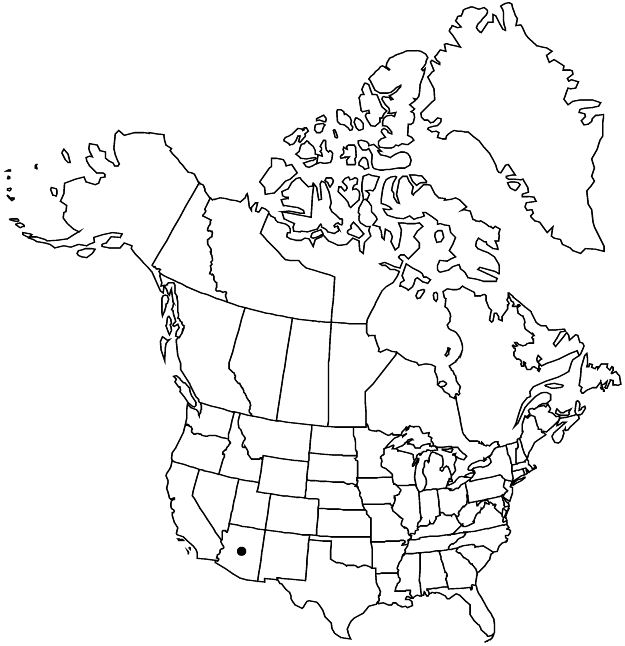Difference between revisions of "Mentzelia isolata"
Brittonia 6: 322. 1948.
FNA>Volume Importer |
FNA>Volume Importer |
Revision as of 18:20, 24 September 2019
Plants annual, without caudices or tubers. Stems erect, to 70 cm. Leaves: petiole to 25 mm (proximal leaves), absent (distal leaves); blade usually lanceolate to hastate, rarely elliptic, basally lobed, sometime with 2 pairs of lobes, or unlobed, to 14 × 4.5 cm, base obliquely obtuse to acute, margins shallowly serrate, apex acute. Pedicels (fruiting) 0.5–0.8 × 1–2 mm (often appearing absent because thick and continuous with capsule). Flowers: petals orange, 5–7 × 2.3–4 mm, apex cuspidate, hairy on apex and abaxially near apex; stamens 8–12, 4–5.3 mm, filaments heteromorphic, 5 outermost narrowly spatulate, inner filiform; styles 3.8–5.5 mm. Capsules clavate or funnelform, 12–27 × 3–5 mm, base tapering gradually, capsule and pedicel not well-differentiated. Seeds 8–12 per capsule, pyriform, without transverse folds. 2n = 20.
Phenology: Flowering Aug–Oct.
Habitat: Arroyo and canyon bottoms, rocky slopes.
Elevation: 1000–1900 m.
Distribution

Ariz., Mexico (Sinaloa, Sonora).
Discussion
Mentzelia isolata intergrades with both M. aspera and M. asperula in southern Arizona. Typically, M. isolata can be distinguished from both M. aspera and M. asperula because its leaf blades are more than two times as long as wide, whereas those of the latter two species are less than two times as long as wide.
Selected References
None.